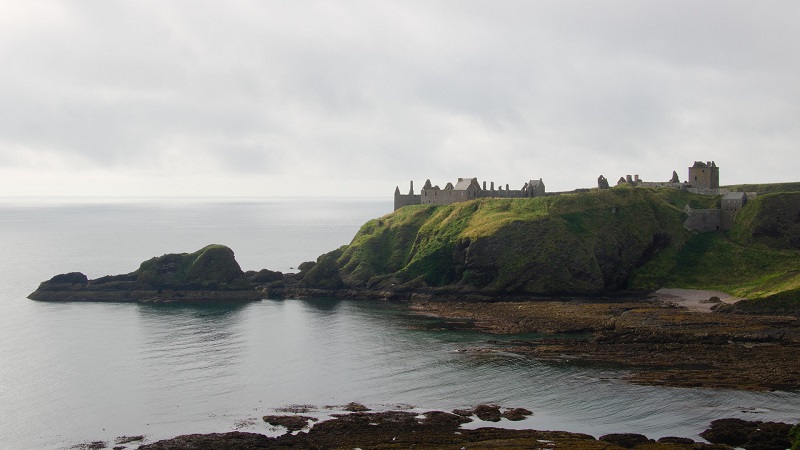Whenever we hear the name of Scotland, the first thought that comes to our mind is about the islands. This happens because there are more than 790 islands in Scotland. This country is a combination of old heritage and modernity. Its amazing beauty attracts many tourists around the world. But today we are not talking about an island, today we are talking about a castle. One of the most amazing things about Scotland is that no matter where you find yourself, a castle is never far away. It is also said that there were once up to 3,000 castles in Scotland, nearly one for every 100 square miles. But the castle we are talking about today is actually a ruined medieval fortress, located upon a rocky headland on the northeastern coast of Scotland, about 3 kilometers south of Stonehaven. It is one of the most beautiful medieval fortresses in Britain. Dunnottar has an incredible combination of good looks and historical importance. And somewhere, It is also believed that this fortress holds many rich secrets of Scotland's colourful past.
Image Credit - Wikipedia
The ruins of the castle are spread over 1.4 hectares, which are surrounded by steep cliffs and providing a very fascinating appearance to the entire area. The surviving buildings are largely from the 15th and 16th centuries, but it is believed that the site may have been fortified in the Early Middle Ages. Although it is not known how long ago this site was originally inhabited, it is believed that its establishment took place in Pictish times between 5000 BCE to 700 CE. Dunnottar Castle has played a major role in the history of Scotland due to its strategic position and defensive strength during the 18th-century Jacobite risings. It is also known for the place where the Honours of Scotland, the Scottish crown jewels, were hidden from Oliver Cromwell's invading army in the 17th century.
Image Credit - Pixabay
Nowadays, Dunnottar Castle is almost completely ruined. During Oliver Cromwell’s bombardment, the castle was badly suffered, and it took until 1925 to start any preservation work. The various buildings inside the castle include a 14th-century tower house and a 16th-century palace. You may need just half of a day to explore Dunnottar Castle, but if you are feeling ambitious, then it's a better idea to walk through neighboring shoreline to Stonehaven to spend more valuable time.
Image Credit - Pixabay
Image Credit - Wikipedia
The ruins of the castle are spread over 1.4 hectares, which are surrounded by steep cliffs and providing a very fascinating appearance to the entire area. The surviving buildings are largely from the 15th and 16th centuries, but it is believed that the site may have been fortified in the Early Middle Ages. Although it is not known how long ago this site was originally inhabited, it is believed that its establishment took place in Pictish times between 5000 BCE to 700 CE. Dunnottar Castle has played a major role in the history of Scotland due to its strategic position and defensive strength during the 18th-century Jacobite risings. It is also known for the place where the Honours of Scotland, the Scottish crown jewels, were hidden from Oliver Cromwell's invading army in the 17th century.
Image Credit - Pixabay
Nowadays, Dunnottar Castle is almost completely ruined. During Oliver Cromwell’s bombardment, the castle was badly suffered, and it took until 1925 to start any preservation work. The various buildings inside the castle include a 14th-century tower house and a 16th-century palace. You may need just half of a day to explore Dunnottar Castle, but if you are feeling ambitious, then it's a better idea to walk through neighboring shoreline to Stonehaven to spend more valuable time.
Image Credit - Pixabay















0 comments:
Post a Comment